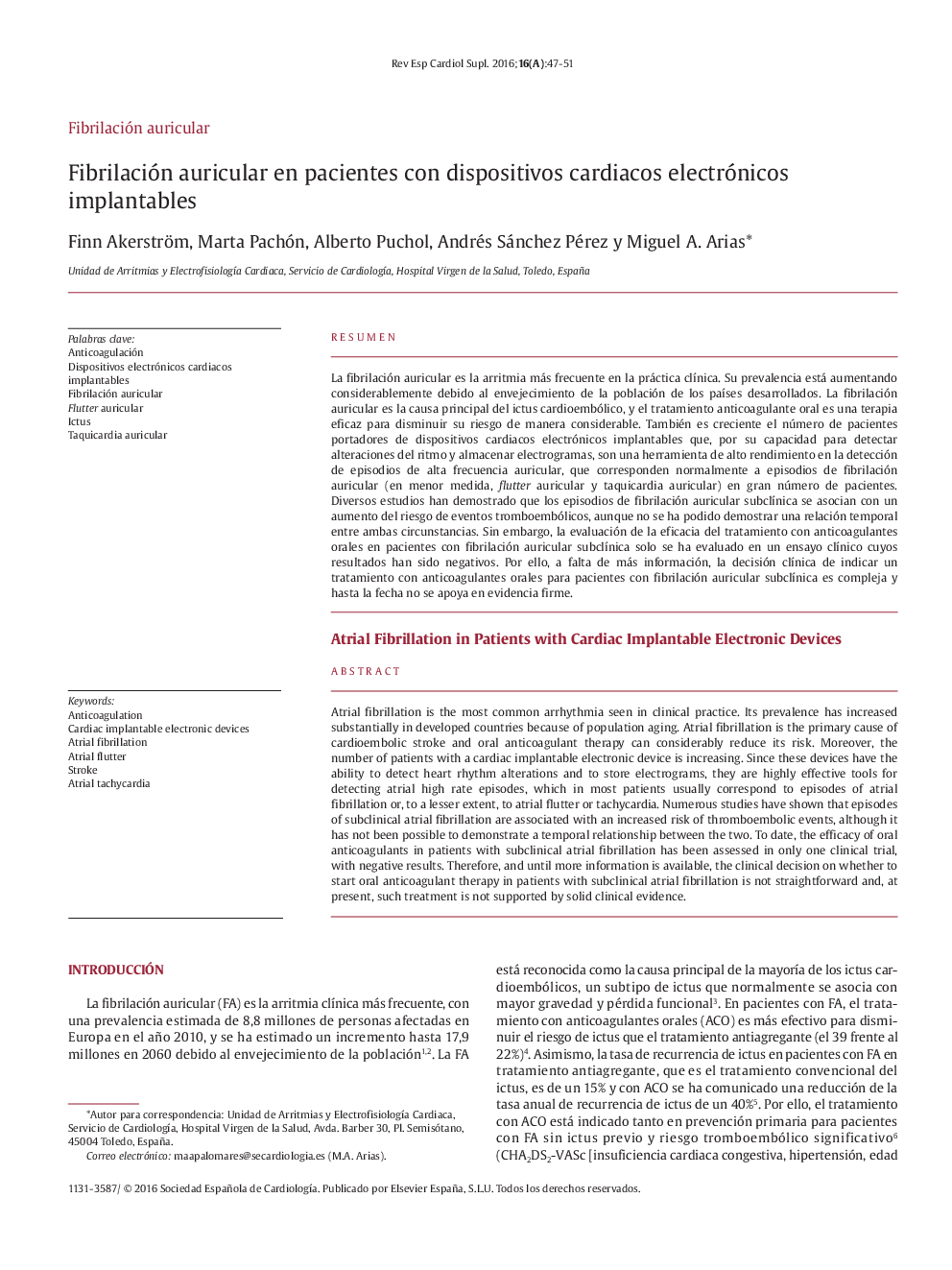| Article ID | Journal | Published Year | Pages | File Type |
|---|---|---|---|---|
| 5620979 | Revista Española de Cardiología Suplementos | 2016 | 5 Pages |
Abstract
Atrial fibrillation is the most common arrhythmia seen in clinical practice. Its prevalence has increased substantially in developed countries because of population aging. Atrial fibrillation is the primary cause of cardioembolic stroke and oral anticoagulant therapy can considerably reduce its risk. Moreover, the number of patients with a cardiac implantable electronic device is increasing. Since these devices have the ability to detect heart rhythm alterations and to store electrograms, they are highly effective tools for detecting atrial high rate episodes, which in most patients usually correspond to episodes of atrial fibrillation or, to a lesser extent, to atrial flutter or tachycardia. Numerous studies have shown that episodes of subclinical atrial fibrillation are associated with an increased risk of thromboembolic events, although it has not been possible to demonstrate a temporal relationship between the two. To date, the efficacy of oral anticoagulants in patients with subclinical atrial fibrillation has been assessed in only one clinical trial, with negative results. Therefore, and until more information is available, the clinical decision on whether to start oral anticoagulant therapy in patients with subclinical atrial fibrillation is not straightforward and, at present, such treatment is not supported by solid clinical evidence.
Keywords
Related Topics
Health Sciences
Medicine and Dentistry
Cardiology and Cardiovascular Medicine
Authors
Finn Akerström, Marta Pachón, Alberto Puchol, Andrés Sánchez Pérez, Miguel A. Arias,
